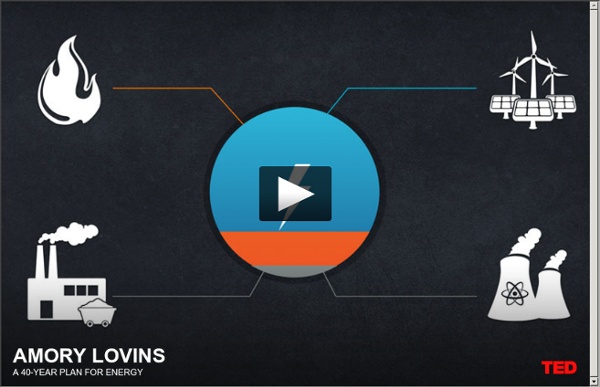



03.18 [自由] 林清富︰增電節能 政府勿被台電綁架 記者鄒景雯/專訪 馬政府說再生能源的發展不佳,台灣廢核必須再等四十年,台大光電所所長林清富受訪指出,政府必須下定決心,每年要增加若干比率的再生能源,若一年增加○.五%到一%,十年就有五%到十%。國外預估二○一五年太陽能發電即可達到有利潤。若做好增電與節能,到核電完全除役時,台灣並不會缺電。 廣告 台大光電所長林清富。 2055年廢核論 江院長不專業 問:行政院長江宜樺在立法院報告非核最遲在二○五五年達成,你有何看法? 林清富:我不知道二○五五年的非核目標是根據什麼資料? 問:經濟部也說再生能源的發展還不成熟,無法替代核電缺口? 林:再生能源的選項,除了水力已是非常成熟的技術之外,嚴格來說,其他技術都尚未成熟,連核能都不算成熟。 再生能源有幾個部分,我比較熟悉的是太陽能,因為在這個領域已有一段時間,稍微了解一些真實的數據。 太陽能成本 每年快速下降 太陽能真正的關鍵在成本。 當全世界的太陽能電池產能擴增一倍,其成本會降為八十%,稱為Swanson effect。 模組之外,目前系統成本從每瓦二美元多到五美元都有,可能與品質和安裝的規模有關,一般來說,愈小規模愈貴,三美元左右的大概是大電廠。 發電成本也和太陽光強度有關,從太陽光強度分布來看,我們比德國和日本都好,所以更值得使用太陽能。 綠能彈性大 先蓋好先發電 問:但這還牽涉到建廠時間的問題,狀況又是如何? 林:太陽能廠與核電廠不一樣。 百萬戶屋頂 可供發電11% 問:太陽能廠需要多少土地? 林:以目前技術,如果做好安裝與維護,商業矽太陽能電廠的效率可達十五%,所以每平方公尺可有一五○W的功率。 土地在哪裡? 又或者是,以住家每戶屋頂一○○平方公尺(卅坪)計算,一○○萬戶可有一○○平方公里。 改善照明設備 可省電80% 問:所以最大的關鍵在政策導向,你對政府有何建議? 林:政府的影響確實非常大,如果十幾年前,我們就跟德國一樣,要求再生能源的占比要增加多少,就算是○.一%,十多年下來累積也有一點多趴,遠比現在高,這個趴數又可以隨技術的進步逐漸增加,所以要做到十%,只要設定達成目標的時程,台灣應該不難做到。 我期待政府下定決心,每年要增加若干比率的再生能源,好好利用太陽能、風力。 除了開創能源,也必須節省能源,但不是依賴不要烤肉、隨手關燈,而是以政策改善電力結構,效益才會大。 設獨立機構 規劃能源政策 問:你對台電有沒有看法?
3 Spotify apps for music geeks These three Spotify apps can help you stop just listening to music and start living it. Moodagent lets a user pick music according to a moodFellody helps find other users who share music tasteSeatgeek shows when bands are coming to a user's area Editor's note: Brenna Ehrlich and Andrea Bartz are the sarcastic brains behind humor blog and book "Stuff Hipsters Hate." Got a question about etiquette in the digital world? (CNN) -- There are a ton of old sayings about music: that it's the food of love, that it soothes the savage beast, that it makes the people come together (yeah). However, just as genres and sounds have twisted and changed over the years (just watch these elderly folks listening to Skrillex for proof) the way we listen to, consume and integrate music into our daily lives has also shifted and altered. Now, with the advent of the Web and advances in technology, music can occupy every corner of our mundane existence -- like a particularly pungent cooking odor, but in a good way.
02.28 [Wenson] 關於能源議題的幾個想法 上面這則海報,前幾天在網路上廣獲傳播,我同時看到多人轉貼,好奇之下也點進去看看轉貼的人講了些什麼。 大多數轉貼者都在叫好,說反正是鬼島嘛不意外,有些人什麼都要反,乾脆用嘴砲發電、鍵盤發電算了,這樣保證台灣不缺電; 少數的人則是不滿這海報的內容「斷章取義」、「去脈絡化」,或說根本就是「反動的修辭」,甚至是擁核勢力的反撲云云。 在我看來,這倒是一個好機會,可以觀察台灣討論社會議題的層次。先講我的結論,從這張海報來看,層次非常淺薄。 由於海報上寫的反對事件都是真的,其中有不少還是轟動一時的社會新聞,乍看之下台灣人好像真的反對所有的電力建設。 有什麼問題? 如果你問我,上面這張表格裡對於台灣的地熱能源發展會不會太樂觀,我的答案是「看起來似乎如此」。 關於台灣的擁核與反核走向,在新上任的江內閣出招要訴諸公投之後,情勢也隨之變得更加複雜。 我先說,我個人並不覺得核能必須全面禁絕,但是我對核四深有疑慮,而我又親身經歷過福島核災時逃離災區附近的感覺, 看著原本很喜歡的日本小城小鎮,還有海邊的小漁港,現在都已經沒有人煙,要我投票的話我會反對核四續建。 想也知道,國民黨祭出公投這招,表面上是訴諸民意,實際上是在找辦法替核四的正當性背書,失敗的風險非常小。 推薦觀賞:有話好說:核四安全總體檢!
Nexus
"Vous voyez, le feu a fait de nous des humains ; les combustibles fossiles nous ont rendus modernes. Mais nous avons maintenant besoin d'un nouveau feu qui nous donne la santé, la sécurité et la durabilité." by epoissonq Dec 3